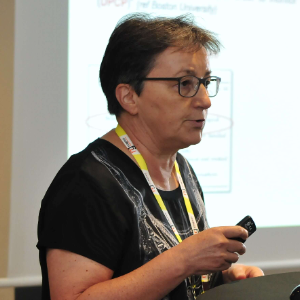Title : Automatic analysis of spontaneous speech for detecting mild cognitive impairment: A screening tool?
Abstract:
Due to increased life expectancy, the prevalence of cognitive decline related to neurodegenerative diseases and to non-neurological conditions is increasing in western countries. Thus, there is an increasing demand, from both social and healthcare systems, for instruments and strategies to recognize cognitive decline, and possibly distinguish the precursor of serious neurodegeneration from “benign senile forgetfulness” or the temporary consequences of illness or trauma. Moreover, novel approaches for the identification of “preclinical “ or “pre-symptomatic” Alzheimer’s disease and other dementia are a key issue in the field. Recent studies showed that discourse alterations may be one of the earliest signs of the pathology, frequently measurable years before other cognitive deficits become apparent. Traditional neuropsychological tests fail to identify these changes. In contrast, the analysis of spoken language productions by Natural language processing (NLP) techniques can ecologically pinpoint language modifications in potential patients. This interdisciplinary study aimed at using NLP to identify early linguistic signs of cognitive decline in the elderly. Methods: We enrolled 96 subjects (age range 50-75): 48 healthy controls and 48 impaired subjects: 16 subjects with single domain amnestic Mild Cognitive Impairment (a-MCI), 16 with multiple domain MCI (md-MCI) and 16 with early Dementia (eD). Each subject underwent a brief neuropsychological screening composed by MMSE, MoCA, GPCog, CDT and verbal fluency (phonemic and semantic). The spontaneous speech during three tasks (complex picture; a typical working day; the last remembered dream) was then recorded, transcribed and annotated at various linguistic levels. A multidimensional parameter computation was performed by a quantitative analysis of spoken texts, computing 67 rhythmic, acoustic, lexical, morpho-syntactic and syntactic features. Results: Neuropsychological tests showed significant differences between controls, md-MCI and eD subjects (p=…..), while they didn’t differentiate between controls and a-MCI subjects (p=….). In the linguistic experiments, a number of features regarding lexical (p=…), acoustic (p=…) and syntactic aspects (p=…) were significant (using the Komolgorov-Smirnov test) in differentiating between all the considered subject groups. Conclusions: Linguistic features of spontaneous discourse transcribed and analyzed by LNP techniques show significant differences between controls and pathological states, and seems to be a promising approach for the identification of preclinical stages of dementia. Long duration follow up studies are needed to confirm this assumption.
Audience take away:
- Should we screen for cognitive decline and dementia?
- Should/could screening for “warning signs” of cognitive be performed in the primary care setting?
- Is spontaneous language a biomarker candidate for cognitive decline?




